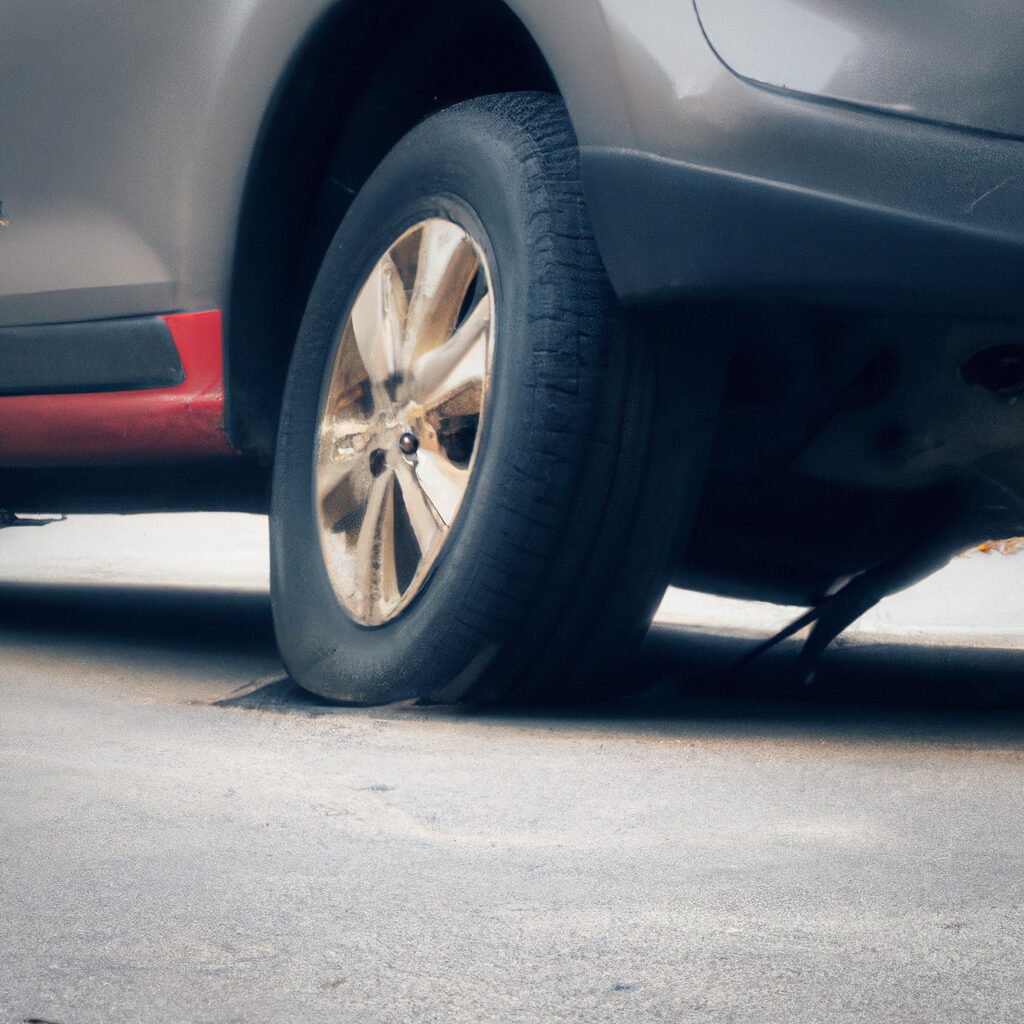rear tire out of balance symptoms
Introduction
Rear tire out of balance symptoms can be a major issue for any vehicle. When a rear tire is out of balance, it can cause a variety of problems, including increased tire wear, vibration, and poor handling. It is important to be aware of the signs and symptoms of an out of balance rear tire so that you can take the necessary steps to correct the issue. This article will discuss the common symptoms of an out of balance rear tire, as well as the steps you can take to correct the issue.
What Causes Rear Tire Out of Balance Symptoms?
Rear tire out of balance symptoms are caused by an imbalance in the weight distribution of the tire. This can be caused by a number of factors, including uneven tire wear, incorrect tire inflation, or a damaged wheel. When the weight of the tire is not evenly distributed, it can cause vibrations and other symptoms while driving.
Uneven tire wear can be caused by a variety of factors, such as driving habits, road conditions, and tire alignment. If the tire is not properly aligned, it can cause the tire to wear unevenly, resulting in an imbalance. Additionally, incorrect tire inflation can cause the tire to wear unevenly, resulting in an imbalance.
A damaged wheel can also cause an imbalance in the tire. If the wheel is bent or cracked, it can cause the tire to be out of balance. Additionally, if the wheel is not properly balanced, it can cause the tire to be out of balance.
The most common symptom of an out of balance tire is a vibration while driving. This vibration can be felt in the steering wheel, the seat, or the floorboard. Additionally, the vehicle may pull to one side or the other, or the steering wheel may shake. If the tire is severely out of balance, it can cause the vehicle to shake or vibrate at higher speeds.
If you experience any of these symptoms, it is important to have your tires checked and balanced as soon as possible. An out of balance tire can cause excessive wear on the tire and wheel, as well as reduce the life of the tire. Additionally, an out of balance tire can cause the vehicle to handle poorly and be unsafe to drive.
How to Diagnose Rear Tire Out of Balance Symptoms?
If you are experiencing symptoms of a rear tire out of balance, it is important to diagnose the issue as soon as possible. Unbalanced tires can cause a variety of issues, including increased wear and tear on the tires, decreased fuel efficiency, and a rough ride. To diagnose a rear tire out of balance, you will need to inspect the tire and wheel assembly.
First, check the tire for any signs of damage, such as bulges, cracks, or uneven wear. If any of these signs are present, the tire should be replaced. If the tire appears to be in good condition, you can move on to the wheel assembly.
Check the wheel for any signs of damage, such as bent or cracked spokes. If any of these signs are present, the wheel should be replaced. If the wheel appears to be in good condition, you can move on to the balancing process.
To balance the tire and wheel assembly, you will need a tire balancer. This device will measure the weight of the tire and wheel assembly and determine if it is out of balance. If the assembly is out of balance, the balancer will indicate which side is heavier and how much weight needs to be added to the lighter side to balance the assembly.
Once the tire and wheel assembly is balanced, you should be able to enjoy a smoother ride and improved fuel efficiency. If the symptoms persist, it is important to have the tire and wheel assembly inspected by a professional to ensure that there are no other underlying issues.
What Are the Most Common Rear Tire Out of Balance Symptoms?
The most common symptoms of a rear tire that is out of balance are vibration and shaking. When a tire is out of balance, it can cause the vehicle to vibrate and shake, especially at higher speeds. This vibration can be felt in the steering wheel, the seat, and even the floorboards. It can also cause the vehicle to pull to one side or the other. Additionally, an out of balance tire can cause premature tire wear, as the tire will be subjected to uneven pressure and stress. This can lead to uneven tread wear and a shorter tire life.
How to Prevent Rear Tire Out of Balance Symptoms?
Maintaining proper tire balance is essential for a safe and comfortable ride. Unbalanced tires can cause a variety of issues, including vibration, uneven tire wear, and poor handling. Fortunately, there are several steps you can take to prevent rear tire out of balance symptoms.
First, it is important to regularly check the tire pressure. Low tire pressure can cause the tire to become unbalanced, leading to vibration and other issues. Make sure to check the tire pressure at least once a month and adjust it as needed.
Second, it is important to regularly rotate your tires. This helps to ensure that the tires wear evenly and remain balanced. It is recommended that you rotate your tires every 5,000 to 8,000 miles.
Third, it is important to have your tires balanced when they are installed. This helps to ensure that the tires are properly balanced from the start.
Finally, it is important to have your tires balanced periodically. This helps to ensure that the tires remain balanced over time. It is recommended that you have your tires balanced every 10,000 to 15,000 miles.
By following these steps, you can help to prevent rear tire out of balance symptoms and ensure a safe and comfortable ride.
What Are the Dangers of Driving with Rear Tire Out of Balance Symptoms?
Driving with a rear tire out of balance can be extremely dangerous and can lead to a variety of issues. Unbalanced tires can cause the vehicle to vibrate, which can lead to driver fatigue and decreased control of the vehicle. Additionally, the vibration can cause premature wear on the vehicle’s suspension and steering components, leading to costly repairs. Unbalanced tires can also cause the vehicle to pull to one side, making it difficult to keep the vehicle in a straight line. This can be especially dangerous when driving at high speeds.
In addition to the physical dangers of driving with an unbalanced tire, it can also be dangerous to the environment. Unbalanced tires can cause increased fuel consumption, leading to higher emissions and a greater environmental impact.
For these reasons, it is important to ensure that all tires are properly balanced before driving. If a tire is found to be out of balance, it should be taken to a professional to be balanced or replaced.
How to Correct Rear Tire Out of Balance Symptoms?
If you are experiencing symptoms of a rear tire that is out of balance, it is important to take the necessary steps to correct the issue. Unbalanced tires can cause a variety of issues, including vibration, uneven tire wear, and decreased fuel efficiency. To correct the issue, you will need to have the tire balanced.
The first step in balancing a tire is to remove it from the vehicle. Once the tire is removed, it should be placed on a tire balancing machine. This machine will spin the tire and measure the weight of the tire. If the tire is out of balance, the machine will indicate where the weight needs to be added or removed.
Once the weight has been determined, the tire should be marked with a marker or chalk to indicate where the weight needs to be added. The weight can be added in the form of lead weights, which are typically attached to the rim of the tire. The weights should be placed in the exact location indicated by the tire balancing machine.
Once the weights have been added, the tire should be re-mounted on the vehicle and re-balanced. This process should be repeated until the tire is balanced.
By taking the necessary steps to balance a rear tire, you can help ensure that your vehicle is running smoothly and efficiently. Additionally, you can help prevent uneven tire wear and vibration, which can lead to costly repairs.
What Are the Benefits of Regularly Balancing Rear Tires?
Regularly balancing rear tires offers a number of benefits for vehicle owners. Properly balanced tires can help to improve the overall performance of a vehicle, as well as its safety.
One of the primary benefits of regularly balancing rear tires is improved handling. When tires are properly balanced, they are able to rotate evenly, which helps to reduce vibrations and improve the overall ride quality. This can help to reduce the strain on the vehicle’s suspension system, which can lead to improved handling and a smoother ride.
Another benefit of regularly balancing rear tires is improved fuel efficiency. When tires are properly balanced, they are able to rotate more efficiently, which can help to reduce the amount of energy needed to move the vehicle. This can lead to improved fuel economy, as well as reduced emissions.
Finally, regularly balancing rear tires can help to extend the life of the tires. When tires are properly balanced, they are able to rotate evenly, which helps to reduce the amount of wear and tear on the tires. This can help to extend the life of the tires, as well as reduce the need for frequent tire replacements.
Overall, regularly balancing rear tires can offer a number of benefits for vehicle owners. Properly balanced tires can help to improve the overall performance of a vehicle, as well as its safety. Additionally, it can help to improve fuel efficiency and extend the life of the tires.
How to Tell if Your Rear Tires Are Out of Balance?
If your rear tires are out of balance, you may experience a number of symptoms while driving. These include a vibration in the steering wheel, a shaking sensation in the seat, and a thumping or humming noise coming from the rear of the vehicle. Additionally, you may notice that the vehicle pulls to one side or the other when driving on a straight road.
To determine if your rear tires are out of balance, you can perform a simple test. Start by driving your vehicle at a steady speed of around 40 mph. If you feel a vibration or shaking in the steering wheel, seat, or rear of the vehicle, then your rear tires may be out of balance.
If you suspect that your rear tires are out of balance, you should have them checked by a professional. A technician can use a special machine to measure the balance of each tire and make any necessary adjustments. This will help ensure that your vehicle is running smoothly and safely.
Q&A
Q: What are the symptoms of a rear tire out of balance?
A: The most common symptoms of a rear tire out of balance are vibration, uneven tire wear, and increased fuel consumption. Vibration can be felt in the steering wheel, seat, or floorboard of the vehicle. Uneven tire wear can be seen as bald spots or cupping on the tire tread. Increased fuel consumption is caused by the tire having to work harder to maintain its balance.
Conclusion
In conclusion, rear tire out of balance symptoms can be identified by a vibration in the vehicle, uneven tire wear, and a steering wheel that shakes. It is important to have your tires balanced regularly to ensure that your vehicle is running smoothly and safely. If you experience any of these symptoms, it is important to have your tires checked and balanced as soon as possible.


